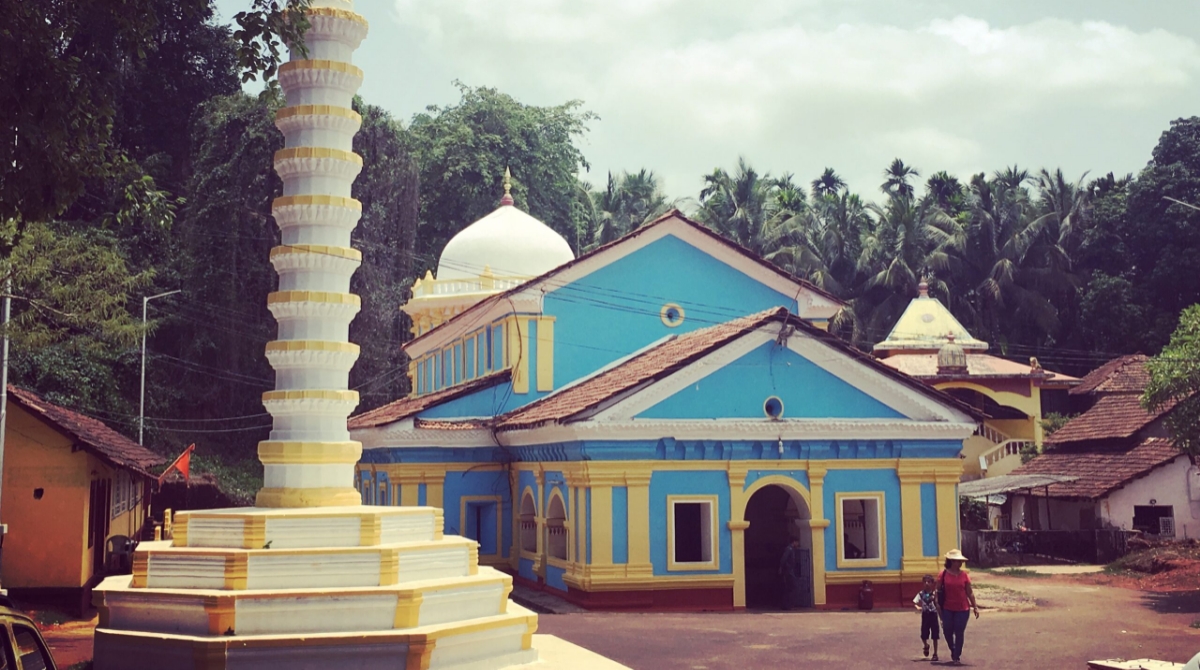The Saptakoteshwar Temple has withstood the attacks of the Delhi Sultanate and the Portuguese and stands these days in all its glory. It is another of those historic temples which shed light on the prosperous historic records & heritage of Goa.
Located in the village of Narve, the Saptakoteshwar Temple is viewed to be one of the six sites which have temples committed to Lord Shiva. Saptakoteshwar used to be one of the major deities of the Kadamba dynasty dating back to the 12th century.
You should visit the temple not just for its architectural style but for the important history associated with it.

History of Saptakoteshwar Temple
The original Saptakoteshwar Temple was located in Narve on Divar Island and was built by Kadambas. The Kadamba Kingdom was conquered by the Bahmani Sultan Alauddin Hasan Gangu in 1352, which resulted in the destruction of several temples.
In 1367, King Harihara conquered Hassan Gangu’s troops and restored the temple to all its former glory. However, after 200 years, the temple came under attack once again by the Portuguese conquerors.
After a war between Shivaji & the Portuguese, the temple was rebuilt in 1688. The stone plaque mentioning this order is installed at the entrance gate.

Shri Saptakoteshwar Temple Religious Significance
The name Saptakoteshwar refers to Sapt meaning seven and Koteshwar meaning lord of crores. The most important festival celebrated in the Temple is Gokulashtami, referred to as a day when Lord Shiva incarnated to give boons to the seven sages.
Like any other Hindu Temple dedicated to Lord Shiva, Shiv Raatri is another festival celebrated in the temple. A large number of Devotees flock in from around the Konkan area. His Devotees keep awake throughout the night singing his glories and offering him immense prayers and prasadam. Lord Shiva overjoyed with his devotee’s dedication bestows blessings and boons. People also take a dip in the sacred tank named Panchaganga Tirtha with a belief that all their sins and illness will be removed. The name Panchaganga Tirtha signifies the meeting point of five holy rivers.

Legend
Legend has it that seven holy sages set off to worship Lord Shiva at a place where five holy rivers met the sea. After undergoing penance for seven years, they were blessed with the appearance of Lord Shiva, who agreed to grant all their wishes.
Lord Shiva agreed to stay back in one of his incarnations, which is known as Saptakoteshwar (sapt seven & koteshwar means Lord of Crores).
Features of Saptakoteshwar Temple
The Saptakoteshwar Temple is built in the medieval style of architecture. There is a small entrance marked with bells, while the main five pillared hall is decorated with arches. Intricate designs adorn the ceiling while the Sanctorum wall is composed of plain wood.
The mandapa of the temple is built in a distinctly European style, which is quite interesting to watch. Brahminical laterite and stone caves surround the temple. In the area close to the temple, there once existed a Jain Math, whose ruins are visible even today.
How to reach?
Saptakoteshwar Temple is located about 35 kilometers from Panaji in a village called Narve. It can be reached via a ferry boat from the island of Divar.


